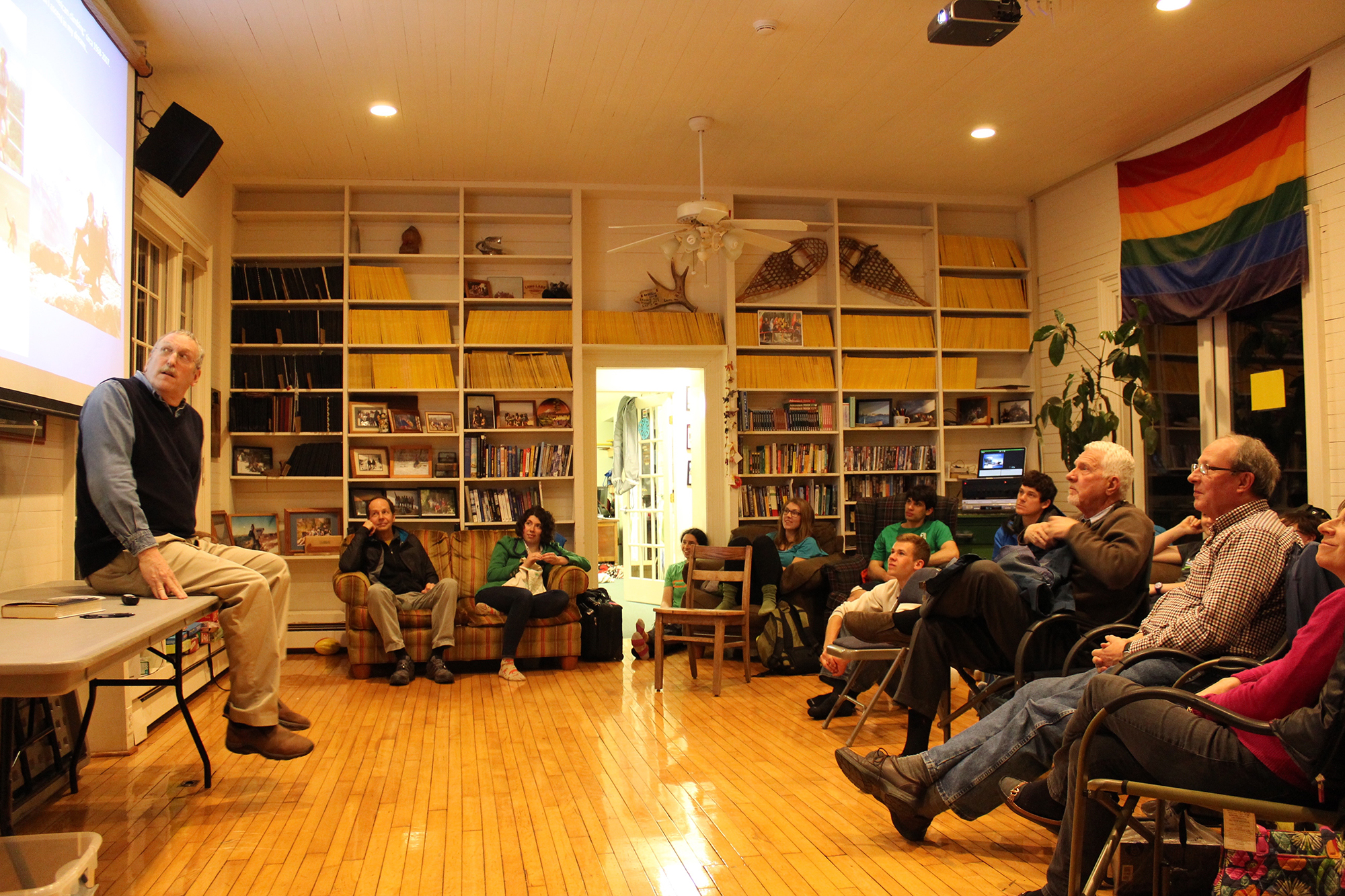
The mountains are much closer to home than you may imagine. The past 375 years of American mountaineering have made mountains a “defining characteristic of American culture,” according to Maurice Isserman, the Publius Virgilius Rogers Professor of American History.
During his talk about the release of his new book Continental Divide - A History of American Mountaineering on April 7, he pointed out the North Face and Patagonia jackets in the audience. Both of those brands were originally designed to protect mountaineers from the elements during their expeditions. However, through centuries of a mountaineering culture and decades of branding in America, these clothes have made their way into many American’s homes.
The story of Continental Divide is one solely of American mountaineering, from the first colonist to climb Mount Washington in 1642 to the American expedition that climbed Mount Everest in 1963. Students and staff crowded into the Glen House to hear Isserman describe tales from past American expeditions. He observed that over many centuries, these great journeys began to expand how American people viewed and valued nature.
During the spring of 2017, Isserman, author of the celebrated Fallen Giants - A History of Himalayan Mountaineering from the Age of Empire to the Age of Extremes, will lead a number of Hamilton students to Nepal for a course studying the history of Himalayan mountaineering. This class will be a part of both the history and environmental studies departments, and will take an intensive look at the literature and history of past mountaineering expeditions to some of the world's tallest mountains. As a culmination of the class, students will have the option of traveling to Nepal during spring break and trekking for five days to the base camp of Annapurna, the 10th tallest mountain in the world.
Sarah Jillings, assistant director of Hamilton’s Outdoor Leadership Program who is helping coordinate the trip, described it as a unique blend of academics with Outing Club ideals. She remarked how valuable Isserman will be to the students on the Nepal trip, and how having such a knowledgeable historian traveling with them to “contextualize the area and trip” will create a profoundly exceptional experience.
Posted April 8, 2016
